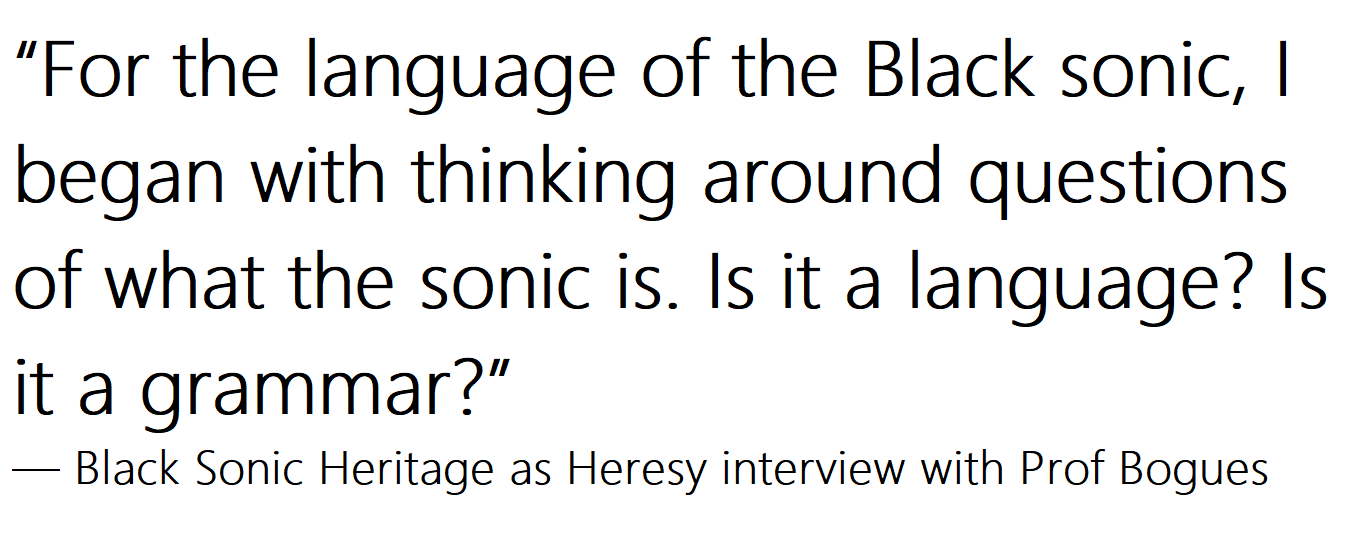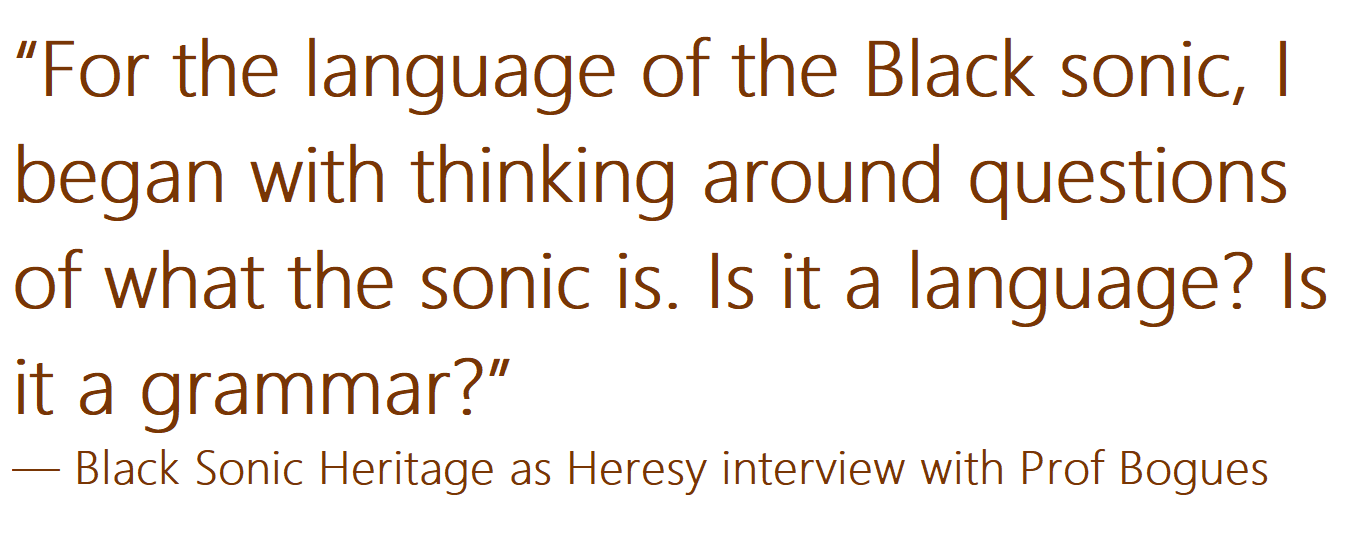Black Phonic Substance is a visualsonic mixtape. Within this mixtape, language is discussed as a central concern of black life. This experiment positions black life as the heretical premise that challenges the orthodoxy of language as defined by the perceptual limits of post-structuralism and linguistics. Here, we consider the phonic substance of teeth sucking, eye rolling and the dialectics of throwing shade.
Black Phonic Substance is the attempt to unsettle the “analytic-interpretative reduction of phonic materiality” and discuss blackness as an ongoing improvisation “that moves in excess of meaning.”
Is it possible to discuss blackness as a sign, signifier and a neither that is both? How might blackness name a fluidity and continuum of expressive communication that exceeds the rigid borders of discipline or geographic location? On these imprecise terms, the published academic texts of both Fred Moten and Denise Ferreira Da Silva become a score - a set of symbolic pitches, rhythms and phrases embodied by performers Carl Hancock Rux and Okwui Okpokwasili, organized into an imagined mix. Vernon Reid scores the opening remarks on Wah-Wah guitar.
To provoke this discussion, digitally archived film and sound are edited, coded and rendered into forms that challenge the formalistic substance of form and substance. As a mixtape, Black Phonic Substance has no singular author or epistemological orthodox. Rather, the focus of the mixtape is Fred Moten’s “anarchic organization” of sound, speech, voice, body and moving image. What is the sonic form that reveals the limits of categorical speech as an organizing mechanism for knowledge and its production? Fred Moten describes “phonic materiality” as the substance that is lost through the “analytic-interpretive” gaze. How might black sound, speech and voice challenge this analytic-interpretive gaze? Within the mix, phonic substance sounds out what Denise Ferreira Da Silva calls “the disruptive/creative capacity that blackness hosts/holds.”



Feel the Beat
Rashaad Newsome’s Shade Compositions are sequenced alongside Abbey Lincoln’s wordless singing and Doug E.Fresh’s beatboxing. Reverend C.L. Franklin preaches the word over Roland TR-909 drums, programmed by DJ Green Velvet. James Baldwin discusses the beat of black speech in his writing.
Rashaad Newsome’s Shade Compositions is the result of the artist’s “casual but extensive ethnographic and linguistic research into global iterations of shade.” Within the piece, shade is a language that is acted out through tone, pitch and gesture that exceed the “word.” Inspired by Newsome’s involvement in NYC’s vogue/ball culture, shade is both a sonic composition and a composition of an underground world of black-queer life.











